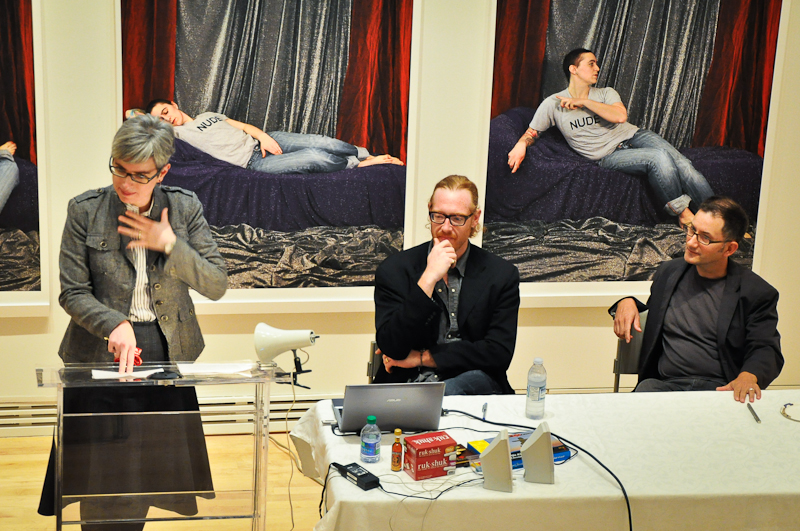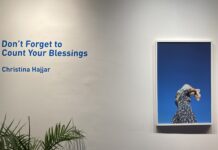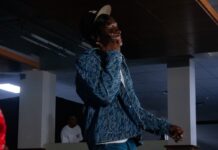About 50 people attended the first of the Carleton University Art Gallery’s (CUAG) new monthly lecture series Sept. 25 that discussed Inukshuks and Toronto light installations.
Double Major features a Carleton academic and an artist from the greater Ottawa community who speak on different topics. After each guest speaks for 20 minutes, a question and answer period from the audience follows.
Fiona Wright, education and outreach assistant in charge of organizing the series, said audience participation is where connections between the two topics are made.
“It’s about listening and learning but also about how the audience interacts with the speakers,” she said.
The idea for Double Major began when Sandra Dyck, the gallery’s director heard of the lecture series “Mixed Taste” at the Museum of Contemporary Art Denver.
“She thought it would work really well at CUAG because we’re part of this really intelligent, academic community,” Wright said.
The first lucky pair chosen to kick off the series was fifth-year PhD student at Carleton Jeff Ruhl, and renowned Ottawa contemporary artist Adrian Göllner.
The two speakers didn’t know what the other had prepared, but the gallery’s website warned it may involve props.
Ruhl did not disappoint, starting his talk with a plethora of Inukshuk paraphernalia, including a game called Ruk-Shuk which Ruhl described as “Jenga but extremely difficult.”
Ruhl said the large amount of Inukshuk souvenirs he receives is a downside when people find out about his research topic.
“I actually hate Inukshuks. Once you get so heavily involved with an object you begin to see them everywhere. It’s like a curse,” he said.
Ruhl’s argument focuses on the appropriation of the Inuit symbol to serve nationalistic goals.
Assisted by a PowerPoint slideshow, he discussed how southern Canada changes the Inukshuk to suit economical and political needs like it did with the Vancouver Olympics logo, Ilanaaq.
“My cynicism derives from . . . taking another aboriginal symbol that we’ve violently dominated in the past,” he said.
Göllner took the audience through a brief history of Chicago’s public art, which included some of the most famous public works in the world, including Anish Kapoor’s Cloud Gate or “The Bean.”
“It’s a city that re-invented itself to the world. The way people perceive Chicago has fundamentally changed. And other cities see this,” he said.
Göllner’s public art has certainly played a role in giving cities a facelift. He’s designed light installations on Toronto’s Yonge Street for the Vancouver 2010 Olympics, illuminated more than 15 towers in Toronto’s downtown core, and received 19 government commissions.
Currently, he’s working on a commission for the Canadian embassy in Moscow that he said may be his favourite project yet. He plans to put magnetic plates under the embassy floor, conceptually “re-polarizing” the building to align it with Canada’s poles.
Overall Göllner is optimistic about the future of public art.
“There’s a great deal of movement . . . we want these things, we want these symbols to identify where we live,” he said.
After the lecture Wright said both speakers were very happy with how the discussion went.
“They loved the questions that got fired at them. It was just as I had imagined it,” she said.
In October, Double Major will feature a zombie talk by Carleton sociology instructor Craig McFarlane and a guide to physical comedy with ubiquitous theatre performer Andy Massignham.
Since Wright said she felt the evening went smoothly, she’s not planning on changing anything for next month.
“I’d love more people . . . but that’s about it. I’m hoping . . . by word of mouth it’ll get more and more popular,” she said. “This is just the beginning.”






